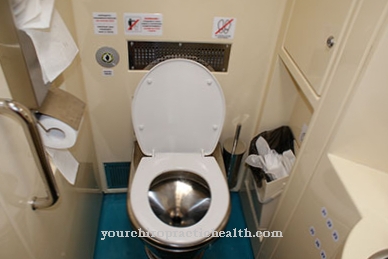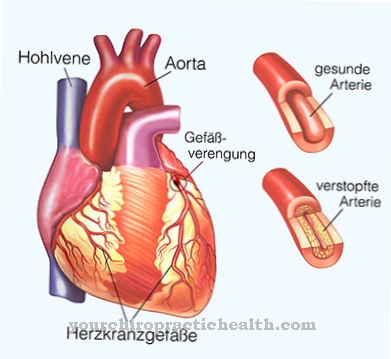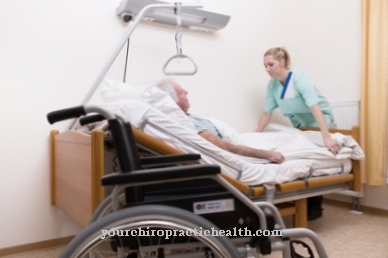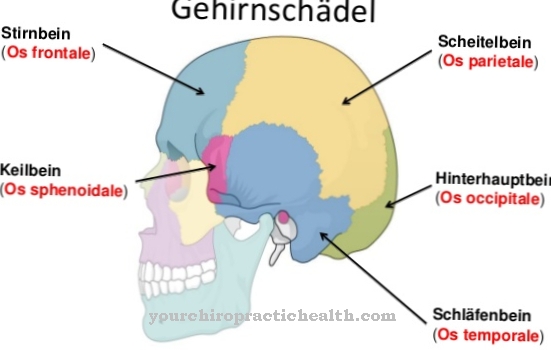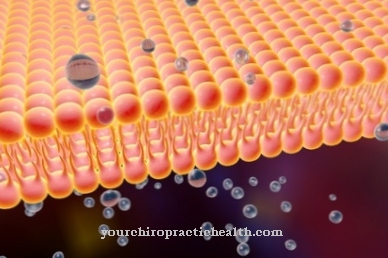Painful complaints can occur in the event of stress or overexertion, poor posture, illness or injury, as well as movement. A special form of pain is the so-called Resting pain.
What is resting pain?

In the case of pain at rest, patients complain of painful sensations that always come to light when the person concerned is at rest, sitting or sleeping.
There are two versions of resting pain, which differ from one another in the localization of the resting pain. In addition to lying deeper, superficial resting pain is also diagnosed. Usually the pain at rest is limited to the arms and / or legs.
The pain at rest are so-called key symptoms and play an important role in various medical fields such as internistics, orthopedists, psychiatry and neurology, because other diseases can be derived from them.
causes
Inflammatory processes or diseases of the joints, such as those that can occur after an improper or excessive strain or as a result of osteoarthritis or other rheumatic complaints, can be a cause of the rest pain, which mainly begins at night. The hips can therefore also be affected by resting pain.
Resting pain can also be triggered by the appearance of a pressure ulcer. If physically immobile, paralyzed people remain in one position for a long period of time, the poor blood circulation will irritate the nerves. These are perceived as resting pain.
Chronic limb pain as resting pain can also be caused by polyneuropathy or toxins. Raynaud's syndrome, a so-called collagenosis, and shoulder-arm syndrome, disorders of the blood flow due to vascular diseases and carpal tunnel syndrome can also cause pain at rest.
You can find your medication here
➔ Medicines for painDiseases with this symptom
- arthrosis
- rheumatism
- Carpal tunnel syndrome
- Pressure ulcer
- Polyneuropathy
- Circulatory disorders
- Raynaud's Syndrome
- Shoulder arm syndrome
- Achillodynia
Diagnosis & course
Depending on which trigger and which underlying disease are responsible for the pain at rest, the pain at rest also manifests itself in a different intensity, location and type.
The pain at rest can be accompanied by an intense stinging or burning sensation, tingling sensation, or numbness. In addition, pain at rest can occur in such a way that the extremities "fall asleep", which can be extremely painful, especially at night.
Pressure or pulling pain is often felt as pain at rest. Pain at rest that is associated with an urge to move and is represented by a throbbing pain is considered very unpleasant.
Complications
Without treatment, pain at rest can cause complications in everyday life that can severely limit everyday working life. Since the causes can also be psychosomatic, complications such as tingling, burning and numbness are to be expected. The more often the affected patient tries to calm down, the stronger the pain can become.
Therefore, a visit to the family doctor as well as the psychologist is necessary. With this examination sequence, a treatment can be selected without any complications for the patient. Treatment complications can arise when psychosomatic medication is used to relieve the affected patient from the suffering.
The complications of treatment can be reduced by examining the patient's medical history. The doctor responsible is responsible for this. He has to investigate whether family members have ever had problems with the medication or have come into contact. The doctor can thus select the individual dose and intensity for the drug.
Pain therapy can help alleviate the pain, but it also takes getting used to. It is therefore important that the patient allows his body to get used to it. In this he should adapt to the various homeopathic healing methods.
When should you go to the doctor?
A doctor should always be consulted if there is pain at rest. Depending on the intensity of the complaints, going to the emergency room is sometimes recommended. If the pain at rest occurs at night and prevents restful sleep, this must be clarified promptly in order to avoid health complications. In general, the following applies: Pain at rest that occurs without an identifiable cause and has a negative effect on physical or mental well-being, must be treated medically. Pain at rest, which is felt with an increased urge to move, becomes particularly uncomfortable over the course of the day and requires immediate clarification.
Even if the extremities "fall asleep" again and again, this should be examined by a specialist, as there may be a nerve problem. The pain may be due to a serious rheumatic disease or pressure ulcer, which, if left untreated, can lead to further symptoms. Pain at rest after an accident or in people with a pre-existing joint or muscle disease should be discussed with the attending physician. In children, adolescents and pregnant women, pain at rest should always be clarified by a general practitioner. Other contacts are rheumatologists, internists and neurologists.
Doctors & therapists in your area
Treatment & Therapy
In order to be able to adequately treat resting pain, the respective medical measures are tailored to the cause of the symptoms. In some cases it is essential to see a doctor immediately. This is necessary when it is a question of resting pain, which is caused by disorders of the blood flow. A whole range of modern pain therapies as well as various invasive interventions help to eliminate pain at rest or make it more bearable.
If the pain at rest is chronic, which is particularly agonizing for pain patients, a wide variety of therapies can help. In this context, the treatment is based on several pillars. In addition to the drug therapy variant, these also include various methods of carrying out so-called anesthesia procedures to combat pain, even if there is no demonstrable underlying disease.
A supplement to the targeted pain therapy for resting pain is given by numerous proven physiotherapeutic methods. In this context, the effects of physical applications are often used successfully against resting pain.
Many people who suffer from the pain of rest trust the possibilities of special alternative healing methods such as homeopathy or traditional Chinese healing art. Acupuncture has become a tried and tested method, which can help reduce pain. Specialist areas such as neurosurgery and psychotherapy also offer a wide range of therapy concepts against pain at rest.
Outlook & forecast
As a rule, pain at rest can be treated relatively well. If the pain at rest occurs only temporarily and does not last long, it can also be combated with painkillers for a short time. Here, however, the patient should be careful not to take the painkillers for a longer period of time, as they damage the stomach. Pain therapies can also help with long-lasting pain at rest. In many cases, the pain at rest cannot be completely contained, but it can be reduced to a minimum.
Due to the pain at rest, those affected are severely restricted in their everyday life and can no longer do certain things in the usual way. The quality of life therefore decreases sharply and can also lead to psychological problems and depression. It is not uncommon for patients to have to rely on the help of other people in order to cope with everyday life.
Especially in old age, the body should not be unnecessarily stressed in order to avoid the pain at rest. The form of therapy depends heavily on the cause of the pain. A healthy amount of activity will help keep your body in shape. Eating a healthy diet also has a positive effect on resting pain. However, whether there is a positive outlook for this symptom cannot be generally predicted.
You can find your medication here
➔ Medicines for painprevention
The pain at rest is an unsightly condition that does not necessarily have to be accepted without treatment. To prevent pain at rest, it should be said that the various organ systems should not be subjected to excessive stress. In the case of pain at rest, this applies to both the psyche and the body. A healthy dose of all activity can be helpful in avoiding the painful resting experience. Proper treatment of underlying diseases is also beneficial in order to prevent the pain from occurring.
You can do that yourself
Pain at rest can usually always be treated with pain relievers. However, the patient should make sure that the painkillers are not used over a long period of time, as they can damage the stomach. However, these are suitable for temporary pain. In addition to the pain relievers themselves, analgesic and cooling ointments and creams can also be used. There are also a variety of home remedies that can counteract the pain at rest.
In addition to herbs such as peppermint or lemon balm, which relieve pain and relax cramps, massages also help relieve pain at rest. The affected area can be slowly massaged in; a nourishing cream can also be used for the skin. Heat and cold therapies are also available. The affected region on the body can be cooled with a cooling pad or warmed up with the help of a heat pad or hot water bottle. Visits to the sauna are also very helpful for resting pain and counteract it. Acupressure and acupuncture can be tried as alternative healing methods.
The affected areas must not be heavily stressed under any circumstances. If the stresses arise from work, they must definitely be stopped. Sports activities should also be restricted if they lead to or promote resting pain. If the wound is open, it can be covered with a plaster or bandage, which can relieve the pain.






.jpg)

.jpg)






